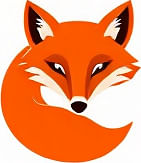Leveraging Engaging Meme Marketing in Niche Markets
 by Thaddeus Blanda
by Thaddeus Blanda
Discover how meme marketing serves as a clever guerrilla PR tactic for small businesses and entrepreneurs in niche markets. Learn practical strategies to create viral content that builds brand awareness and connects with audiences in fresh ways.

Meme marketing has emerged as a fresh approach for brands seeking to stand out. This tactic uses humorous or relatable images and text to spread messages quickly. In niche markets, where resources are limited, meme marketing offers an affordable way to gain visibility.
For small business owners, the appeal lies in its simplicity. Creating memes requires basic tools like social media apps or free design software. This method allows entrepreneurs to share content that resonates with specific audiences. By focusing on community interests, businesses can foster loyalty.
One key strategy involves timing. Posting memes during relevant events or trends can amplify reach. For example, a local coffee shop might create content around seasonal holidays. This helps in building a narrative that feels personal and immediate.
In practice, effective guerrilla PR through memes means being authentic. Audiences respond to genuine humor rather than forced promotions. A fitness brand targeting health enthusiasts could use memes to highlight everyday challenges. Such content often goes viral, leading to organic shares.
To get started, businesses should identify their core audience. Understanding preferences helps in crafting memes that hit the right notes. Tools like social listening can reveal popular themes. Once identified, creators can adapt existing meme formats to fit their message.
Building a Meme Strategy
Developing a plan is essential for success. Start by setting clear goals, such as increasing followers or driving traffic. Next, brainstorm ideas based on current events. A pet supply company in a niche market might draw from animal trends.
Use lists to organize efforts:
- Research trending topics weekly.
- Create variations of popular meme templates.
- Test different platforms like Twitter or Instagram.
- Analyze engagement to refine future posts.
This structured approach ensures consistency without overwhelming resources. Over time, patterns in audience feedback can guide improvements.
Real-World Applications
Many small brands have seen results from this tactic. A artisan jewelry maker used memes to showcase unique designs. By tying humor to fashion mishaps, they connected with young buyers. The content spread through shares, boosting sales.
Another example comes from tech startups. These companies often use memes to explain complex ideas simply. This makes niche markets more accessible, drawing in curious customers.
Challenges exist, however. Not every meme will land well. Cultural sensitivities must be considered to avoid backlash. Businesses need to monitor responses and adjust quickly.
To mitigate risks, collaborate with community members. Involving customers in meme creation can build trust. Their input ensures content feels inclusive and relevant.
Measuring Success
Tracking performance is crucial. Metrics like shares, likes, and comments provide insights. Tools such as analytics dashboards help in evaluating impact. For instance, a spike in website visits after a meme post indicates effectiveness.
Long-term benefits include stronger brand identity. Regular engagement through memes keeps audiences coming back. This fosters a sense of community around the brand.
In summary, meme marketing stands out as a practical tool for guerrilla PR. It empowers small businesses and entrepreneurs to compete in crowded spaces. By focusing on creativity and relevance, brands can achieve meaningful connections. Those ready to experiment will find new paths to growth in their niche markets.
